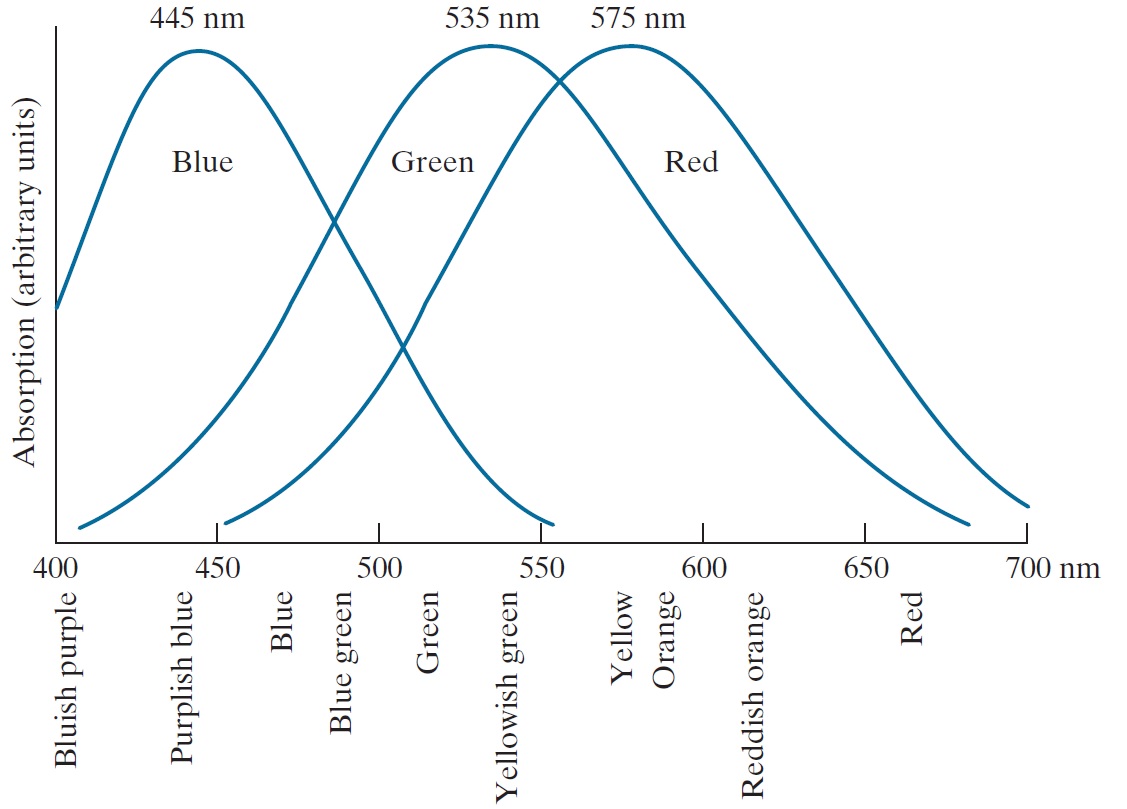Color Image Processing
Although the human brain's process of perceiving and interpreting color is a physiopsychological phenomenon that is not fully understood, the physical nature of color can be expressed on a formal basis supported by experimental and theoretical results.
In the year 1666, Sir Isaac Newton discovered that when a sunlight beam passes through a glass prism, the resulting light is not white, but rather a continuous spectrum of colors ranging from red at one end to violet at the other. In following figure shows, that the color spectrum may be divided into seven broad regions: red, orange, yellow, green, blue, indigo and violet. When viewed in full color no color in the spectrum ends abruptly; rather, each color blends smoothly into the next.

Figure: Passing white light through a prism produces a color spectrum.
Fundamentally, The nature of the light reflected from an object determines the colors that humans and some other animals perceive in it. In the electromagnetic spectrum, visible light is made up of a relatively narrow band of frequencies. A body that reflects light that is balanced in all visible wavelengths appears white to the observer. However, a body that favors reflectance in a limited range of the visible spectrum exhibits some shades of color. For example, green objects reflect light with wavelengths primarily in the 500 to 570 nm range, while absorbing most of the energy at other wavelengths.
Cones are the eye sensors responsible for color vision. Extensive experimental evidence has established that the human eye's 6 to 7 million cones can be divided into three major sensing categories, roughly corresponding to red, green, and blue. Approx 65% of all cones are sensitive to red light, 33% are sensitive to green light, and only about 2% are sensitive to blue. However, the blue cones are the most sensitive. The figure below represents average experimental curves detailing light absorption by the red, green, and blue cones in the eye. Because of these absorption characteristics, the human eye sees colors as various combinations of the so-called primary colors: red (R), green (G), and blue (B). The following specific wavelength values for the three primary colors: blue = 435.8 nm, green = 546.1 nm, and red = 700 nm.

Figure: Light absorption in the human eye by the red, green, and blue cones